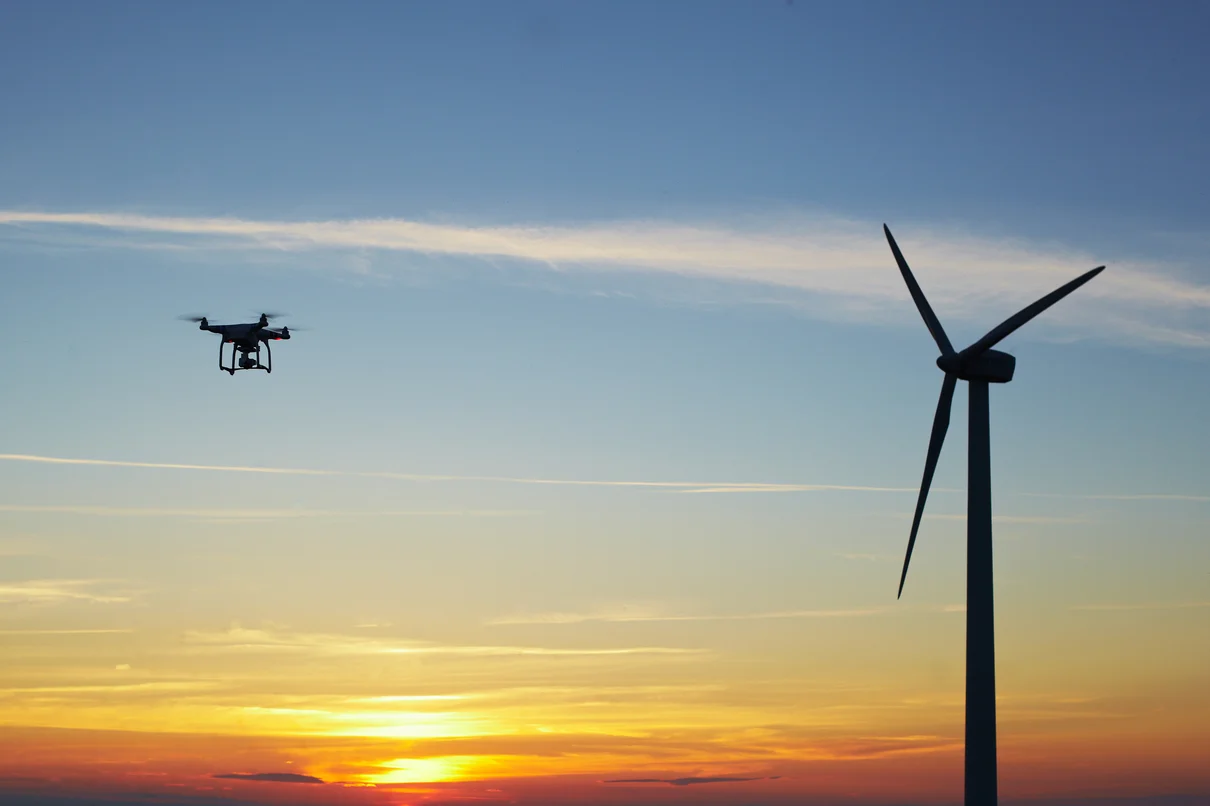At the beginning of June, the experts from Deutsche Windtechnik were among the first to carry out a large-scale offshore inspection campaign using automated drone technology. The deployment included the periodic inspection of the rotor blades at the Butendiek offshore wind farm, which is fitted with 80 Siemens SWT 3.6-120 wind turbines. The novel approach was made possible by advancements in drone technology as well as new specifications from the German Federal Maritime and Hydrographic Agency (BSH), which allow remote optical inspection procedures in addition to the tried-and-tested rope access technology.
“Using our drone at the Butendiek offshore wind farm, we were able to verify that a drone can save a significant amount of time compared to the conventional rope access technique. This has significantly reduced the downtimes of the turbines during inspections,” said Jens Landwehr, Managing Director of the Offshore Unit at Deutsche Windtechnik.
The DJI M300 RTK drone had previously been upgraded with customised
camera and sensor technology during an extensive engineering process so that it could carry out the rotor blade inspections at the Butendiek offshore wind farm. The entire inspection procedure is based on the new BSH specification called “Requirements for Rotor Blade Inspections Using Remote Optical Inspection Procedures & Clarification of the Inspection Obligation for the Interior of the Rotor Blade and the Lightning Protection System”. According to this specification, 50% of an offshore wind farm’s turbines can be inspected using a drone each year. Subsequently, 8% of these turbines are additionally inspected using rope access technology after a detailed review of the documented drone footage by the inspection experts.
100% of the exterior of the rotor blade is documented
“Using drone technology to inspect rotor blades enables us to get a more complete picture of the entire exterior of the rotor blade compared to conventional rope access technology. In addition, the ability to determine the exact location of possible damage as well as the support provided by the software help to precisely document the development of the damage, and this can be very helpful for the assessment. The economic advantages due to the shorter time required for the procedure and the resulting shorter downtimes make this method a suitable alternative to rope access technology in many cases,” said Tobias Bläs, Team Lead Rotor Blades.
Deutsche Windtechnik’s inspection body provides a wide range of modular inspection services for onshore and offshore. This allows customised packages of services to be put together that fulfil the individual requirements of clients.
Source: WAB
















